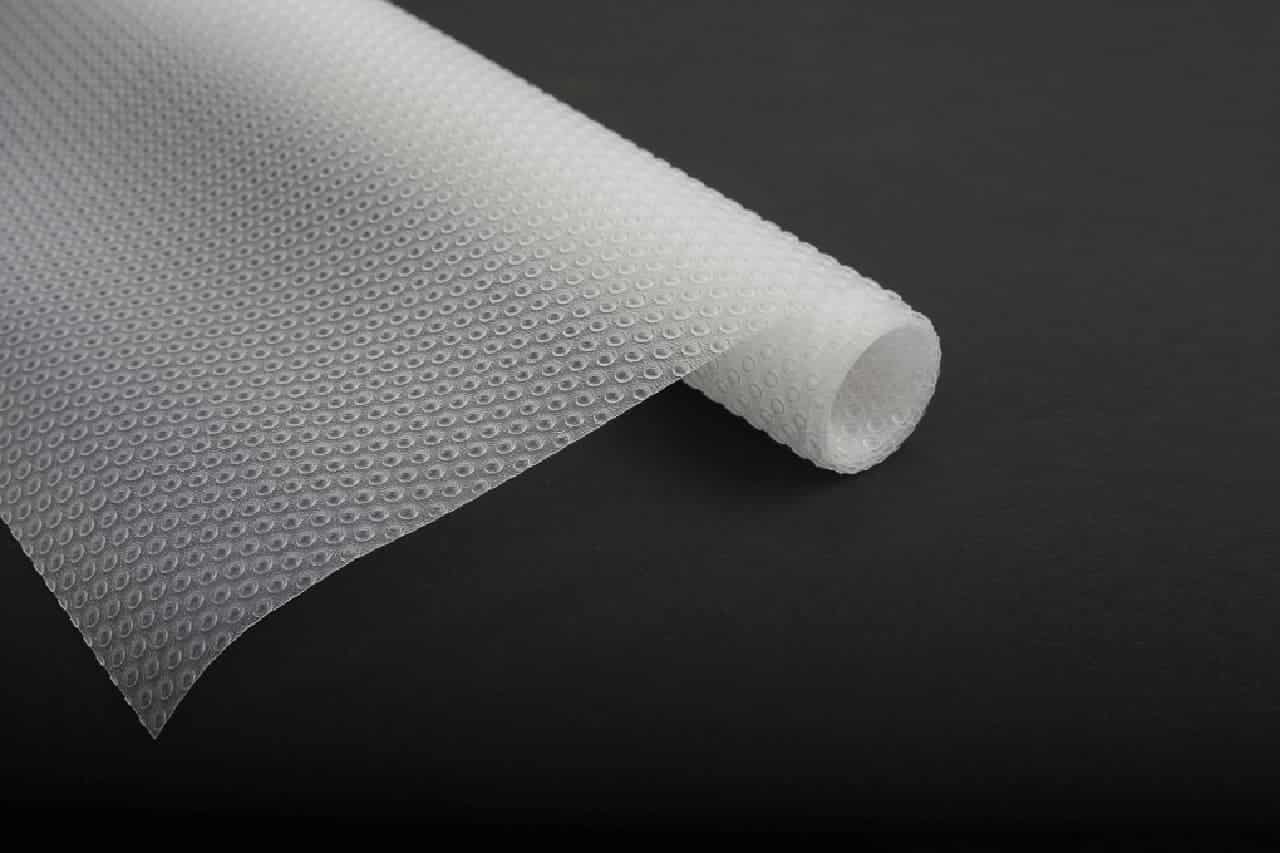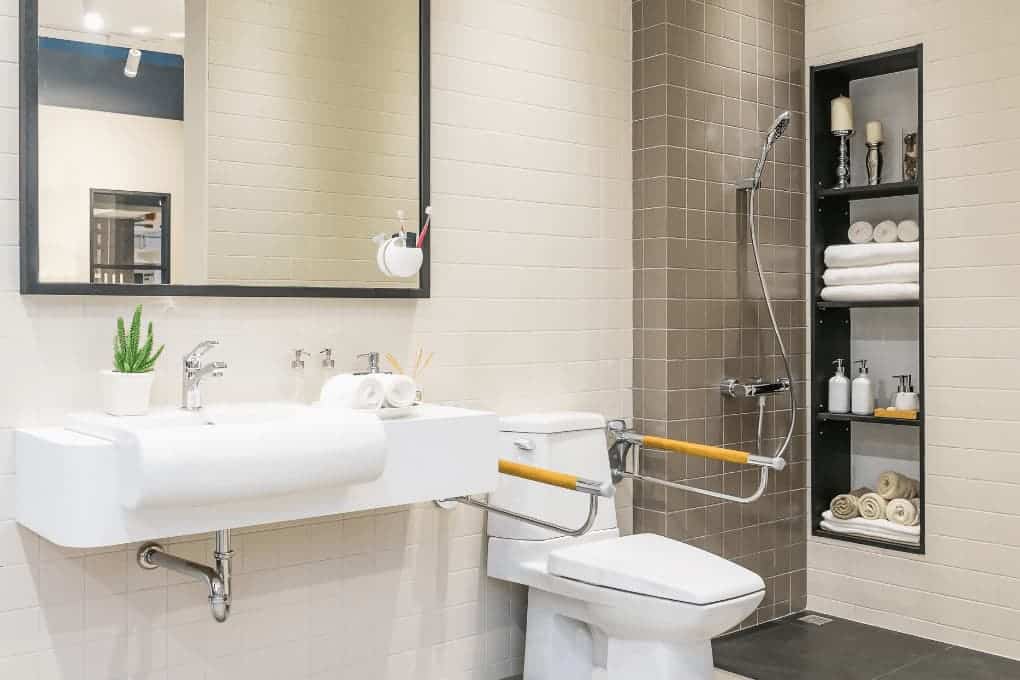Table of Contents
The bathroom is a vital space in any home, but it can become a safety hazard as we age. Limited mobility, balance issues, and reduced dexterity can make navigating a standard bathroom layout challenging for seniors. Moreover, glossy tiles and slippery bathroom floors can increase the risk of injury, leading to falls, injuries, and a loss of independence.
This guide provides tips and suggestions for creating a senior-friendly bathroom that prioritizes safety and comfort. By incorporating these elements, you can make a bathroom safer for seniors and avoid the dangers of getting injured on slippery surfaces.
Essential Safety Features of a Senior-Friendly Bathroom
As individuals age, ensuring their safety and comfort within the home becomes increasingly important. While renovating other parts of the house, a bathroom remodel with all bathroom safety equipment is crucial. Nowhere is this more crucial than in the bathroom, where slips and falls can have serious consequences. Implementing senior-friendly features in your bathroom can greatly reduce the potential hazards of accidents and promote independence.
Here are some essential safety features to consider while making bathroom modifications:
1. Non-Slip Flooring

Wet bathroom floors can be a culprit for bathroom injuries, increasing challenges for an elderly person. Install slip-resistant flooring throughout the bathroom to minimize the risk of falls. Consider textured non-slip tiles, rubber mats, or even specialized non-slip coatings. Slip-resistant shower floors reduce the risk of slips and falls and enhance shower safety. Moreover, keep necessary bathroom items accessible to avoid unnecessary movement.
2. Grab Bars

Strategically placed grab bars offer vital support near the toilet, shower/tub entrance, and next to the sink. They can make bathroom visits safer for older adults. Grab bars provide stability and support, reducing the risk of slips and falls, especially in wet floor areas like showers and near toilets.
Seniors with limited mobility can use grab bars to navigate the bathroom more independently, reducing the need for assistance. Installing grab bars in strategic locations ensures seniors can easily access essential fixtures like toilets and showers.
Choose grab bars made of sturdy materials and ensure they are properly anchored.
3. Walk-In Showers

Replacing a standard tub with a walk-in shower eliminates the need to step over a high threshold, reducing the risk of falls. Walk-in showers have low or no thresholds, making them easy to enter and exit, especially for seniors with arthritis. They are convenient for seniors with mobility issues or those who use mobility aids like walkers or wheelchairs.
These fixtures often have safety features such as grab bars and non-slip flooring, reducing the risk of slips, falls, and other accidents. A walk-in shower with a built-in shower seat and non-slip mats offers an even safer bathing option.
4. Seating

Incorporate bath seats or bath lift chairs to allow seniors to bathe safely and comfortably while seated. Non-slip bath mats would also be a great addition to create non-slip surfaces in the bath spaces. They help cater to the dangers for seniors during bathing.
- Incorporating seating options into a senior-friendly bathroom is crucial for promoting comfort, safety, and independence. Here are the benefits of having seating in the bathroom:
- Having a seat, such as a bath lift chair or a built-in bench, allows seniors to rest and conserve energy during showers.
- By providing a stable seating surface, seniors can minimize the risk of falls while bathing or grooming.
- Seating in the shower or tub makes these fixtures more accessible for seniors with mobility issues or physical disabilities.
5. Height-Adjusted Fixtures
Consider raising the toilet seat and installing a sink with a higher countertop. This adjustment can make a great difference for seniors, making these essential fixtures easier to use from a seated position. This simple modification can greatly improve independence and safety in the bathroom, ensuring a more comfortable and convenient experience for elderly individuals.
6. Lighting and Visibility

Ensure plenty of lighting throughout the bathroom, particularly in the shower/tub area and near the vanity. Consider using brighter bulbs and nightlights to improve visibility. Using contrasting colour schemes on walls and floors can also enhance visual clarity. Installing the perfect lighting setup and taking care of the correct lighting levels are key.
Additional Safety and Comfort Features for Seniors’ Bathroom
Besides the above-mentioned requirements, here are some additional features for elderly bathroom users. These bathroom accessibility enhancements help elderly adults to access the bathroom more conveniently.
- Anti-scald devices: These prevent common bathroom faucets from dispensing excessively hot water, reducing the risk of burns.
- Hand-held Shower heads: Correct shower equipment, such as hand-held shower attachments, offer greater control and flexibility for showering.
- Temperature-controlled environments: Consider installing a thermostatically controlled shower valve. They help maintain a comfortable water temperature throughout the entire shower, making it comfortable and safe for the elders.
Tailoring Solutions to Individual Needs
A standard bathroom setup, designed with the needs of younger, able-bodied individuals in mind, may not adequately address the unique requirements of seniors. High thresholds, narrow doorways, and cramped spaces can pose significant barriers to accessibility and safety. Additionally, fixtures like standard-height toilets and sinks may require seniors to bend or stretch beyond their comfort level, increasing the risk of falls and accidents.
It’s important to remember that every senior’s needs are unique. Consider conducting a comprehensive assessment of the individual’s specific limitations and preferences to create a bathroom environment that best suits their well-being.

